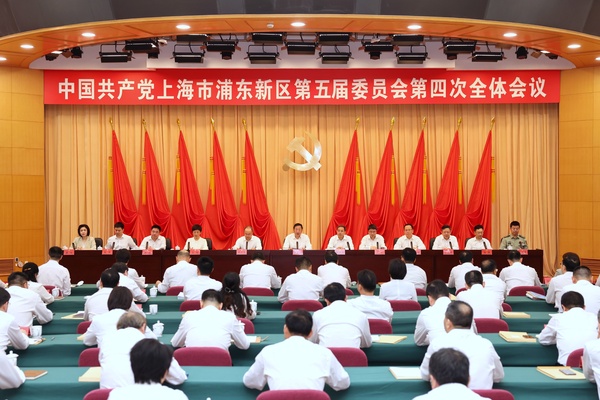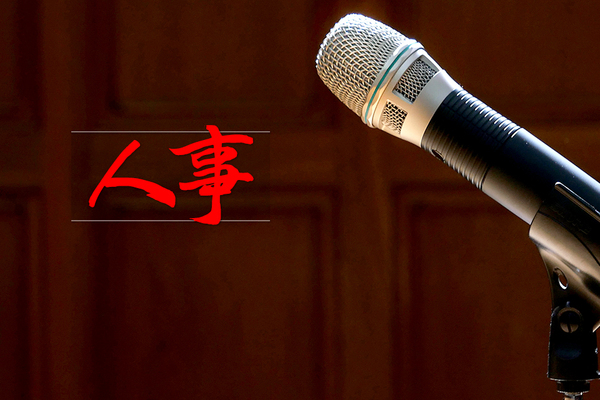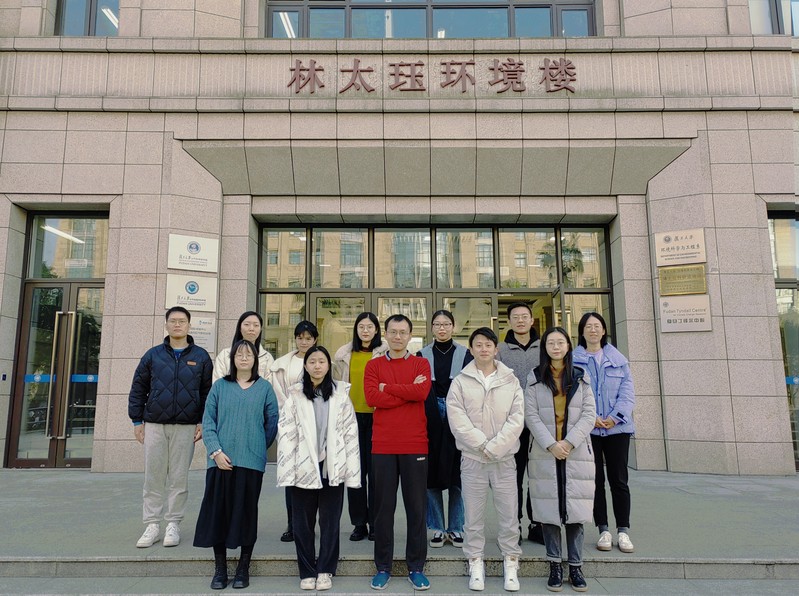Successful application for World Heritage Site! There have been these "disputes" behind the scenes
Pengpai News learned that on the afternoon of September 17th local time, the "Pu'er Jingmai Mountain Ancient Tea Forest Cultural Landscape" in Yunnan, China was successfully declared as a World Heritage Site in Saudi Arabia. This is the world's first tea culture World Heritage Site and China's 57th World Heritage Site.
"The successful application for World Heritage Site is not only a re understanding, inheritance, continuation, and innovation of the diverse values of the heritage site, but also an urgent need to expand and strengthen the tea industry. This will be a milestone leap for Jingmai Mountain, China, and even the global tea industry," said Wang Jianrong, a tea expert and former director of the China Tea Museum, in an interview with Paper News. "China is the birthplace of tea, and Jingmai Mountain Ancient Tea Forest is the natural gene bank and tea cultural resource treasure trove of ancient tea trees. It provides real and strong evidence for studying the origin, evolution, artificial domestication and dissemination of tea trees, as well as clarifying the relationship between the origin of tea tree species and early domestication and cultivation." Success will also promote interdisciplinary research and promote the establishment of an ecologically efficient tea industry
The Chinese delegation held the 45th World Heritage Conference in Riyadh, the capital of Saudi Arabia on September 17th, with surging news footage at the review site
At the 45th World Heritage Conference held in Riyadh, the capital of Saudi Arabia, the approval of the "Pu'er Jingmai Mountain Ancient Tea Forest Cultural Landscape" as a World Heritage Site was announced in an instant
Photography of Clear Source Cultural Heritage Site at the 45th World Heritage Conference by Wei Qingshangjin

Jingmai Mountain Ancient Tea Forest is located in Pu'er City, Yunnan Province. During the Five Dynasties period, the ancestors of the Bulang ethnic group migrated to Jingmai Mountain and discovered and domesticated tea trees. They also adapted to local conditions and jointly cultivated and bred ancient tea forests with later Dai ancestors. Afterwards, residents of multiple ethnic minorities such as the Hani, Wa, and Lahu gradually settled here, becoming a grand national park with distinct ethnic characteristics and harmonious coexistence. Subsequently, generations of Bulang and other ethnic minorities continuously cultivated, domesticated, and bred tea trees. The ethnic group that originally relied on hunting for a living gradually developed into tea tree cultivation as the main production activity, and gradually derived economic functions. In the Qing Dynasty, Pu'er tea was designated as tribute tea for the royal family and court officials to drink, and the Jingmai Mountain Ancient Tea Forest entered a period of prosperity and development. It still maintains stable development to this day.
On February 25, 2023, in Pu'er City, Yunnan Province, an aerial photo was taken of Nuogang Ancient Village.
Compared to other famous terraced and farmhouse style tea gardens in the world, the Jingmai Mountain Ancient Tea Forest not only has a longer history, but also has distinct characteristics in its traditional understory planting method and maintenance of forest ecosystem stability.
Jingmai Mountain in Pu'er, Yunnan
Applying for World Heritage is a difficult and lengthy process. In 2012, the "Yunnan Pu'er Ancient Tea Plantation and Tea Culture System" was included in the "Global Important Agricultural Cultural Heritage" protection pilot of the Food and Agriculture Organization of the United Nations; In the same year, the National Cutural Heritage Administration listed Jingmai Mountain Ancient Tea Garden on the Preparatory List of World Cultural Heritage in China.

In 2012, Wang Jianrong, a tea expert and former curator of the China Tea Museum, participated in an expert group sent by the National Cutural Heritage Administration to Jingmai for research and field investigation. Wang Jianrong recalled to the surging journalists: "After the launch of the application for World Heritage of Jingmai Mountain's ancient tea forest, the relevant national departments and expert teams have done a lot of work in terms of value awareness, heritage protection, optimization of industrial structure, improvement of residents' living environment and other aspects around the application for World Heritage. In 2019, led by the National Cutural Heritage Administration, experts from home and abroad gathered to hold an international seminar on 'Research on Tea Culture Landscape Protection and Sustainable Development' in Jingmai to make the final push for the application for World Heritage."
In 2019, an international seminar on tea culture landscape protection and sustainable development was held in Pu'er, with photos provided by Wang Jianrong
"The application for World Heritage can significantly enhance the brand awareness, reputation, and influence of Jingmai Mountain Tea, thereby helping to explore diversified derivative industries such as multifunctional agriculture, cultural tourism industry, science popularization and research industry, and cultural creativity industry based on regional ecological environment and cultural landscape resources, and centered around the core theme of Pu'er Tea. It can stimulate the industry's hematopoietic function to the greatest extent while avoiding economic risks caused by excessive reliance on single tea sales, forming a new scene of rural revitalization with orderly industrial development, beautiful ecology and livability, and moving towards common prosperity." After the successful application for World Heritage, Wang Jianrong accepted an interview with The Paper News about the cultural landscape of Jingmai Mountain ancient tea forest in Pu'er. Discussions were held on the value of tea forests, disputes over the origin of tea trees, and the consumption of Pu'er tea.
Dialogue with Wang Jianrong
Pengpai News: What is the value advantage of Jingmai Mountain's ancient tea forest cultural landscape compared to other tea mountains in China, as it has successfully applied for World Heritage?

Wang Jianrong: The core value of Jingmai Mountain's ancient tea forest lies first in its thousands of acres of ancient tea forest. In Huimin Town, Lancang Lahu Autonomous County, Pu'er City, there are 1180 hectares of ancient tea forests preserved in the heritage and buffer zones, which are known as the "origin of natural tea plantations" and the "Museum of Human Tea Culture, History, and Nature". It is a typical sample of the "understory tea planting" tradition that continues to this day in the southwestern region of China, and the oldest artificially cultivated ancient tea garden discovered in the world with the largest contiguous area, the most complete preservation, and the oldest age.
The Jingmai Mountain Ancient Tea Forest is also a natural gene bank and a treasure trove of tea culture resources. It provides real and strong evidence for studying the origin, evolution, artificial domestication and dissemination of tea trees, as well as clarifying the relationship between the origin of tea tree species and early domestication and cultivation.
Entrance to Jingmai Mountain Ancient Tea Forest
Pengpai News: The cultural landscape of Jingmai Mountain's ancient tea forest is also a traditional village inhabited by multiple ethnic groups. What is the ecological relationship between local residents and tea?
Wang Jianrong: In summary, tea is in the forest, villages are in the tea forest, farmland and other production activities are outside the tea forest.

The value of the cultural landscape of the ancient tea forest in Jingmai Mountain lies in its three-dimensional and composite model of efficient agriculture and distinctive human settlements in mountainous areas. This is a traditional village inhabited by multiple ethnic groups such as Dai, Bulang, Hani, Wa, and Han. Mountain ethnic groups, based on a full understanding and utilization of nature, use their wisdom to condense unique land use techniques, village construction techniques, and traditional handmade tea making techniques, making it a model of smart mountain human settlements.
The vivid picture of "mutual growth of forest and tea, and mutual prosperity between humans and the earth", where the primitive forest agricultural culture and modern ecological civilization interact and complement each other, will also bring certain inspiration to the sustainable development of current society.
Jingmai Mountain Nuogan Ancient Village in Pu'er Prefecture, Yunnan Province
The ancient trees in Jingmai Mountain
Pengpai News: What impact will the successful application for World Heritage have on the entire Chinese tea industry?

Wang Jianrong: Firstly, it will promote interdisciplinary academic research. The historical causes, cultural values, ecological significance, and practical protection, development, and utilization of the ancient tea forest in Jingmai Mountain are of great significance to the history of human agricultural development, the cultural landscape value of the ancient tea forest itself, and its underlying ethnology, botany, anthropology, ecology, and so on.
Secondly, it is to promote the establishment of an ecological and efficient tea industry. The organic and sustainable evolution of ancient tea tree planting gardens and the inheritance of Chinese tea culture is not only a practical need to truly achieve the goal of "green mountains and clear waters are invaluable assets" and implement the strategy of rural revitalization, but also an inherent requirement to strengthen the absolute advantage of Chinese tea culture in the world of tea planting, production, and drinking, enhance the competitiveness and reputation of China's tea industry, and protect global ecology, culture, biodiversity, and human creativity.
Ancient Tree Tea from Jingmai Mountain
Another thing is to promote China as the world's source of tea. At present, coffee, grape and tequila planting areas have been listed in the The World Heritage List, while the cultural landscape heritage project with tea as the theme was previously in a blank state. As a masterpiece created jointly by humans and nature, tea is not only the best plant-based beverage, but also a medium symbol of Chinese culture. China is the birthplace of tea and tea culture. Tea is to China what coffee is to Brazil, red wine is to France, and beer is to Germany. It is indispensable. The successful application of Jingmai for World Heritage will greatly enhance the global influence of China's tea industry.
Pengpai News: It is undeniable that tea originated in China, but why have there been some disputes over its origin, such as the Indian origin theory?

Wang Jianrong: In 1924, British Lieutenant Colonel Bruce discovered a wild tea tree with a height of 13.1 meters in the Satya region of Assam, India; In 1833, Bruce's brothers discovered a large area of wild tea trees in Sipziga, so he concluded that the origin of tea was in India. After this news returned to the UK, the British were all excited. You should know that Chinese tea was sold very expensive in the UK at that time, which sparked a lot of coverage from the British media. Afterwards, there were various theories about the origin of tea, such as the one source theory, the two source theory, and even the multi source theory.
But this is a big joke, tea originated in China and it is indisputable. I can share with you some real feelings about seeing wild big tea trees in Yunnan, such as the wild big tea tree in Bada, Yunnan. I have been there three times, and this big tea tree is 32 meters tall at its highest point, which is equivalent to a 10 story ordinary residential building. The trunk of the tree is thick and requires multiple people to hug. Later, due to various reasons such as lightning strikes, the large tea tree collapsed in 2014, and the remaining 14 meters of tree trunk are now displayed at Menghai Chensheng Tea Factory. In addition, there are also grand tea trees like Xiangzhujing in Lincang, Bangwei, and the thousands of acres of tea gardens in Jingmai Mountain, all of which are very spectacular and exciting.
In addition to these towering wild tea trees in Yunnan, we have found many large tea trees in Guangxi, Guangdong, Jiangxi, Sichuan, Zhejiang, and Fujian. Therefore, only a few large tea trees have been found in India, which is definitely not enough to claim the origin of plants.
Fossils of Guizhou Qinglong tea seeds
Pengpai News: What evidence is there now to suggest that tea originated in China?

Wang Jianrong: Firstly, tea seed fossils were discovered in China. This tea seed fossil was discovered in Qinglong County, Guizhou in 1980, approximately 1.65 million years ago. This is a very important physical evidence.
In addition, a tea tree seed dating back 8000 years has been discovered at the Cross Lake Bridge site in Xiaoshan, Hangzhou, Zhejiang. This is currently the only evidence of ancient tea tree species in the world. There are also some pottery pots and cooking utensils unearthed from the Cross Lake Bridge site, and there are also some plant residues inside. We believe that it is basically Chinese herbal medicine, although it cannot be determined to be tea, it must be related to Chinese herbal medicine.
Fossil specimens of ancient tea tree roots, unearthed from the Tianluoshan Site in Yuyao, Zhejiang Province
Tea tree roots dating back 6000 years have also been discovered at the Tianluoshan Site in Yuyao, Zhejiang. They are arranged in a regular pattern around human habitation. The explanation is that it is artificially cultivated. 6000 years ago, someone systematically cultivated tea trees. These tea tree roots have been tested and found to contain the unique theanine component of tea.
The classification units of the plant kingdom include kingdom, phylum, class, order, family, genus, and species. Tea belongs to the Camellia genus of the Camellia family. The distribution center of plants is in the Yungui River area of China. Currently, there are 23 genera and more than 380 species of Camellia plants found in the Yungui River area. Therefore, from the perspective of botany, the origin center of tea trees should be in the area where the Camellia genus of the Camellia family is relatively concentrated, which is the origin or center.

Pengpai News: How did Chinese tea spread to various parts of the world?
Wang Jianrong: Currently, there are more than 60 countries around the world that grow tea. Most of their tea trees are directly introduced from China, while a small number are indirectly introduced from other countries. However, all of them originate from China. Therefore, we can proudly say that China is the hometown of tea, and Yunnan Guizhou River in China is the origin of tea trees.
The migration of tea began in the 9th century AD, around 804 AD, when Japanese envoys from the Tang Dynasty brought tea seeds and cultivation methods from Tiantai in Zhejiang to Japan. Introduced to the Korean Peninsula since the 9th century. It was not until the 18th century that successful trial planting was achieved in Indonesia, and large-scale introduction was not until the 19th century. At that time, Georgia, Brazil, Sri Lanka, India, the United States, Japan, Türkiye, Iran, Pakistan, Bangladesh, Vietnam and Thailand were all introduced on a large scale after the 19th century.
Jingmai Mountain is not only a place for Pu erh tea, but also a place that one doesn't want to leave after visiting.
On May 20, 2016, in Pu'er, Yunnan, young people making Pu'er tea

In the 20th century, China also promoted the spirit of internationalism and helped many African countries, such as Kenya and Ethiopia, to plant tea gardens, build tea factories, and teach tea production and processing skills. China has a history of discovering and utilizing tea for thousands of years, but in fact, India only began some cultivation in the 1780s and introduced Chinese tea varieties, which were not extensively cultivated until the 19th century. So the origin of India can only be said to be a foam.
Pengpai News: In recent years, some people have proposed that Pu'er tea is a special type of tea and does not belong to the black tea category among the six major tea categories in China. What do you think?
Wang Jianrong: Pu'er tea is a unique geographical indication product in Yunnan. It is made from Yunnan large leaf sun dried green tea that meets the environmental conditions of the Pu'er tea production area, and is produced according to specific processing techniques. It has unique quality characteristics. Since the Tang and Song dynasties, Pu'er tea has been named after its concentrated sales in Pu'er Prefecture. Pu'er tea is divided into two types: raw tea and ripe tea. The history of raw tea is very long, while the ripe tea process only emerged after 1973. At that time, Yunnan's raw tea had to undergo long-distance transportation before it could reach the sales area. During the transportation process, people found that the quality of the tea had changed and the flavor was unique, gradually forming the process of ripe tea.
In 2003, the Quality and Technical Supervision Bureau of Yunnan Province issued local standards for Pu'er tea, which elaborated on the definition of Pu'er tea. It pointed out that the raw materials for Pu'er tea must be fresh leaves of large leaf tea trees in a certain area of Yunnan Province, which should be dried under sunlight and undergo post fermentation processing. This clearly pointed out the important role of microorganisms in the formation of product quality. Therefore, from the above expression, it can be seen that microbial fermentation has become a key point, which is also the main reason why Pu'er tea is classified as black tea.
On February 26, 2019, in Pu'er, Yunnan, Jingmai Mountain, ancient tea trees and tea leaves

Pengpai News: It is said that Pu erh tea becomes more fragrant as it ages. How do we taste Pu erh tea?
Wang Jianrong: Currently, there are three main production areas for Pu'er tea, namely Xishuangbanna, Pu'er, and Lincang. Pu'er tea also has a life cycle, and the more it ages, the more fragrant it is. It does not really become more fragrant all the time. If measured on a 50 year cycle, 15-25 years is a peak period for tasting and tasting. Ordinary people can store a small amount, but it is not suitable for large storage. Large storage requires certain warehousing standards. If someone tells you this is a century old tea, I don't recommend drinking it. Firstly, the taste of century old tea has been lost, and secondly, there is a risk of fraud, as excessive pursuit of old tea and vintage can easily lead astray.
In terms of drinking, the taste of Pu'er tea is not easy to soak out, so it must be brewed with boiling water. Due to the prolonged fermentation of Pu'er tea, a moisturizing process can be added to awaken the tea's firmness and remove any impurities. You can use a teapot with a large belly to brew tea, which can avoid the problem of the tea being too strong.
Good Pu erh tea soup has a bright red color, while lower quality tea soup lacks brightness and often contains dust or flocculent substances; Smell the aroma, high-quality tea soup with a strong and pure hot aroma, and a sweet and long-lasting cold aroma; Those with lower quality have a low aroma, mixed with sour, rusty, and watery flavors; In terms of taste, high-quality flavors are rich and smooth, with a smooth throat and a sweet aftertaste, while low-quality ones have a flat and even astringent sensation.




